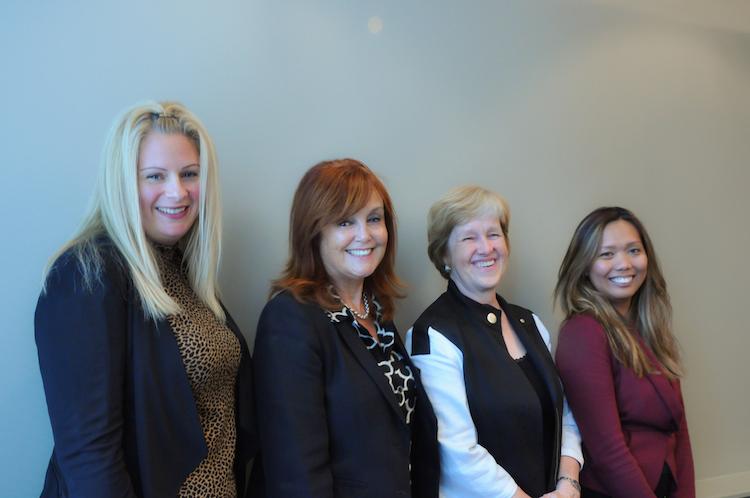Though a city’s chief planner is one of its most influential people, residents are often unaware of who they are, or what they do. For a city as large as Toronto, at such a pivotal point in our development we are lucky to have a chief planner as communicative, accessible, and charismatic as Jennifer Keesmaat.
Hired in 2012, Keesmaat set about opening the doors to Toronto’s City Planning department. Realizing that although the city already had a new and well thought out official plan to guide development, Toronto residents were not engaged in the process of city building, and planners felt disconnected from the communities they served.
According to Keesmaat, planners who studied planning because they care about the community often “ended up sitting in little cubicles in far off civic centres not really interacting with communities at all.”
Chief Planner Roundtables
In 2013 Keesmaat moderated a series of Chief Planner Roundtable events open to the general public. Experts, researchers, and strategists were invited to give brief presentations focused on imminent issues ranging from transportation and mobility in the suburbs to urban resilience and disaster management.
The objective was two-fold: give experts, city staff, and councilors a space to generate fresh solutions collectively, and create public awareness around the work the city does to maintain (and hopefully improve) our quality of life.
Still, given our diverse population and a lack of engagement from the general public, Keesmaat didn’t have any grand expectations. “We weren’t sure if anyone would show up!” she said.
The events were hugely successful. “Every single one was standing room only,” said Keesmat. Aside from great attendance, each was televised on Roger’s cable, and live commentary from the public was incorporated into the conversation via Twitter commentary [#CProundtables].
Roundtables are very attractive to people already engaged in discussions around city building, but Keesmaat’s team is working hard to attract the attention of the other 99.9 percent of Torontonians, and that is not always easy.
“There isn’t a ‘one-size-fits-all’ way to have a conversation with Torontonians. We’re much too diverse of a city,” said Keesmaat.
In the past 18 months the department did a number of experiments in public engagement. The most successful was Planners in Public Spaces (PIPS).
Planners in Public Spaces
Partnering with LEGO, twenty PIPS events were held in public areas, everywhere from malls to street festivals and farmers markets. The stacks of LEGOS generated curiosity, helping participants visualize what planners do.
“No one is ever going to come out to a meeting if they don’t know what city planners do,” said Keesmaat. And indeed, of the 1,700 Torontonians who stopped by a booth, 97 percent of them had never attended a public meeting.
Keesmaat is hopeful however, because Torontonians were interested. “There was an infinite amount of curiosity about how the city works.”
PIPS were not just about playing with LEGOS and eating ice cream. Residents were also shown maps of their neighbourhood and asked to point out “the lemons and the lemonade.”
Adding transparency and engaging in dialogue around city planning are certainly valuable, but are truly useful when they effectively inform the work going on in the city planning office. And that work revolves around writing reports.
“Planning is a lot of heavy rigorous analysis,” said Keesmaat.
In Toronto, our planning office not only evaluates and approves specific public and private sector projects, they also do analysis and develop recommendations to City Council (which you elect).
When council adopts recommendations they become by-laws. The set of by-laws that govern development are called municipal code.
“Anyone who comes near a planning division sees the magnitude of the influence that we have on the city,” said Keesmaat.
Strategic plan
Inside the office, Keesmaat and her team have recently released a strategic plan designed to create direction and clarity around the priorities and responsibilities of the planning department, both inside, and outside city hall.
The aim is to increase efficiency and better deliver on what the city has mandated them to do. This process involves going through the department with a fine-tooth comb and streamlining processes.
One of the most substantial ideas put forward in the plan is the proposed Development Permit System.
Right now, Toronto approves buildings one site at a time, which is time-consuming and lacks foresight. A development permit system includes planning the future built form of an entire neighbourhood and establishing a set density.
Plans for park spaces, community centres, schools, and daycares, as well as how the funds will be generated to pay for needed infrastructure, will all be set out and made part of city code. This will provide builders with the clarity they have long sought from the city, shorten approval times, and ensure development charges gathered in a specific neighbourhood serve the residents who paid for them.
“The development permit bylaw is such a revolution … it will allow us to be very clear,” Keesmaat asserted.
This also allows for control over long-term development, a good example being maintaining employment areas in a metropolis that is focused around housing development.
The city recently adopted recommendations to protect employment areas, and for good reason. Employment areas ensure the city continues to attract businesses to Toronto , and maintain a diverse (read more profitable than residential) tax base. And to be fair, live-work-play isn’t just for Bay Street, it’s for Scarborough too.
Greater clarity will also ensure that fewer projects are rejected by the city and end up before the Ontario Municipal Board (OMB), which costs both real estate developers and the city money. People pick up the tab on both ends when we buy homes, pay taxes, or do both.
The Ontario Municipal Board is currently under fire, and the province is talking about reforming it. Right now, around 5 percent of the City of Toronto’s proposals end up before the OMB.
“Of those 5 percent, just over 2.8 percent we win,” Keesmaat said. It appears like a very small percentage but a much larger number of the projects are settled prior to an OMB hearing.
“A settlement is just what is sounds like,” she said , “You’re settling.”
Keesmaat would rather Toronto continue to raise its standards.
“I’m a firm believer in OMB reform,” she said. But though she hopes for greater consistency coming from the board, she feels doing away with an appeal body is unrealistic.
“It has an important role to play.”
Want to get involved?
Visit: The City Planners Blog http://ownyourcity.ca/
Follow Jennifer Keesmaat on Twitter @jen_keesmaat
Google Search: Toronto City Planning Office




